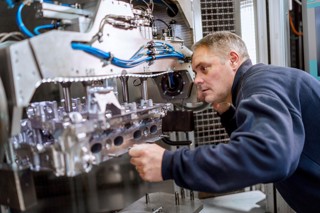The M6 was soon to sell out its 2006 UK allocation of about 400 units, so paying over the odds was the only way for some people to take delivery of a car.
Although it shares its engine, transmission and many other components with the M5, the M6 is an even more driver-focused vehicle: 45kg lighter than the iconic saloon, and with a carbon-fibre roof among its unique features.
At £18,000 more than the M5 at the time (the gap has recently widened to £18,265), I wonder how many buyers realize if they sold their exclusive coupé now, they would be down at least £20,000 on their original investment just six months or so on.
A search of the classified ads shows the majority of M6s for sale at below £70,000, and some at the cost of a new M5, at about £63,000.
Meanwhile, the M5, which has now been on sale for about a year, is available on 55-plates with similar mileage to the first of the M6s for between £55,000 and £60,000.
The near £20,000 premium charged for the M6 when new is almost eliminated on the used market. The M5 has been available in one form or other for many years, and the name is familiar to many more car buyers than the newcomer M6.
It seems that the legend of the M5 is worth more than the price of any extra equipment fitted to the M6, and even BMW, a master of managing residual values, can’t seem to communicate this price effectively to used car customers.


















Login to comment
Comments
No comments have been made yet.